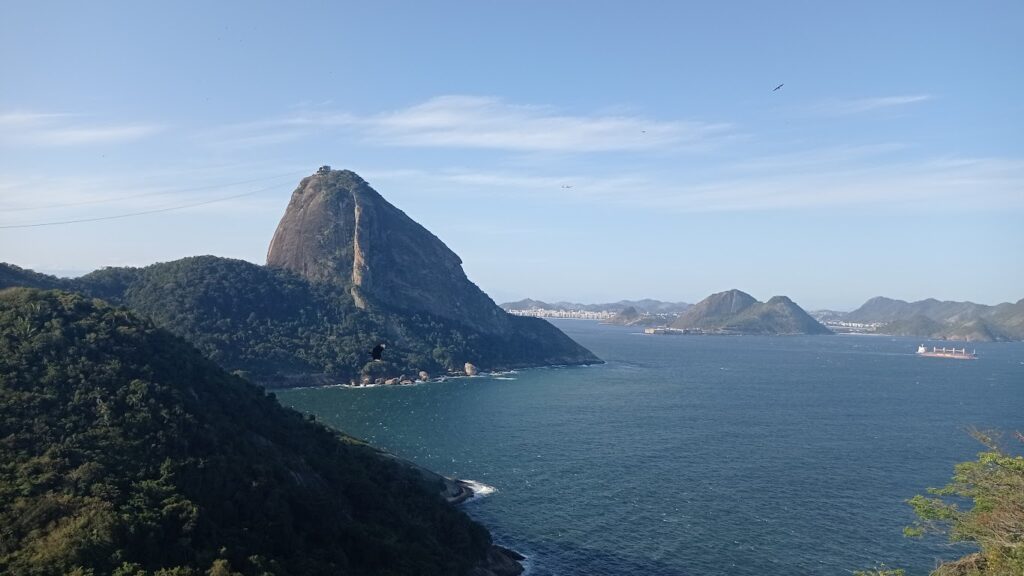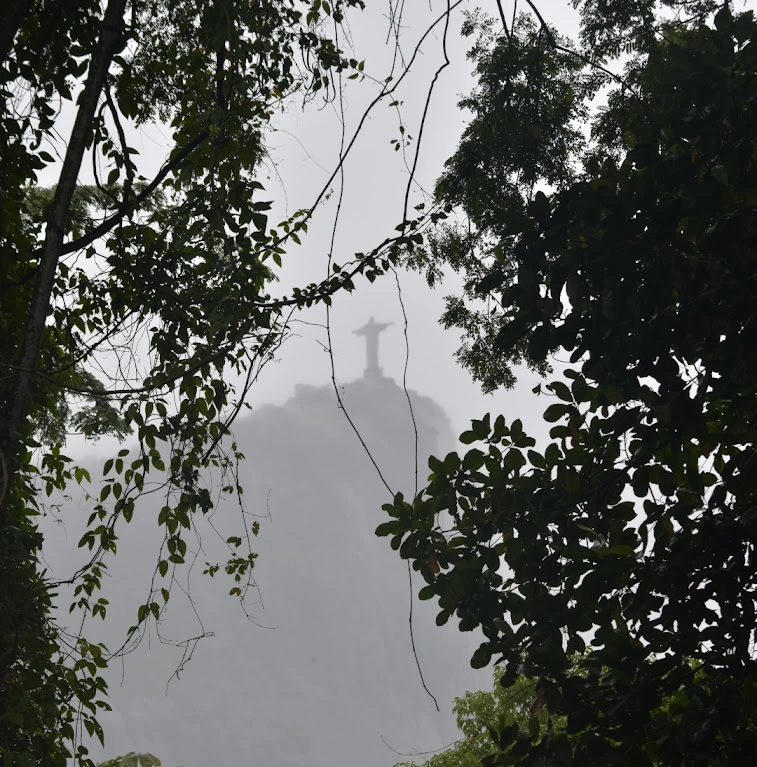Rio’s Best (Free) Sugarloaf Mountain Alternative: Duque de Caxias Hill
Rio is known for many things, but its peaks have enchanted people ever since Portuguese explorers clapped eyes on this slab of land in 1502. The karst landscapes of Rio de Janeiro Bay, with their near-vertical black rock faces, covered in lush jungle where gravity allows, are one of the Seven Wonders of the Natural World. Two of them, Sugarloaf Mountain and Corcovado Mountain (where a certain statue of Christ sits) are what propelled Rio onto the tourist map.
Sitting in the, sometimes literal, shadow of Sugarloaf Mountain is a much smaller peak: Duque de Caxias fort hill. As well as being the best alternative to its more famous neighbour, I’d go as far as to call Duque de Caxias hill one of Rio’s most underrated attractions – here are eight reasons why.
It’s very cheap to enter.
Adult tickets are about R$4 (less than a pound), and entry on Tuesdays is completely free. Say what you will from here on out, but you can’t deny that four reais is much less than Sugarloaf Mountain’s R$150.
The views are great – and detailed.


I’m of the opinion that less is more when it comes to views.
Going up to Christ the Redeemer or Sugarloaf’s summit will show you just how sprawling this city is – but the pinnacle of detail you’ll see without binoculars is a single skyscraper.
Meanwhile, going up the much shorter Duque de Caxias hill will provide views of the surrounding verdant green forests swaying in the wind, jet-black frigatebirds effortlessly gliding about above the dark blue sea, the waves lapping against the sand of Copacabana beach and the sight of people playing football and beach volleyball in the sunshine. It’s a bunch of classic Brazilian scenes that unfold under the rather patriotically placed flag at the fort’s entrance. On top of all that, the much taller peaks that surround Rio loom through the heat haze, positively dwarfing humanity down below.
There aren’t nearly as many crowds as Sugarloaf Mountain.


I had a moment of “oh my word, is this the queue” when I arrived at Sugarloaf Mountain and clapped eyes upon the leviathan line of people. Meanwhile, at Duque de Caxias, I merely sauntered up to the guard post, with not a soul around but me and the soldiers on guard. After being granted entry within a heartbeat and not a single bit of paperwork, I was off and heading upwards. There were a few groups of visitors enjoying the view at the top, but it wasn’t anything close to hectic.
It’s easy enough to walk up.
From the army base at… the base, to the fort at the summit, one has to walk for about fifteen minutes through a small patch of rainforest. The shade from the trees and the ocean breeze make this rather pleasant even on Rio’s muggiest days. While it does get a little steep in certain sections, you could probably still do this walk in your beachwear.
There are marmosets at the top.


For anyone who wants to see some monkeys in Rio, this is the quickest place to do so. Like many of Rio’s green spaces, a family of friendly marmosets lives here, drawn by the occasional scrap of food handed out by humans (even though there are signs everywhere telling them not to). Marmosets are not actually native to Rio, having been brought over as pets from the coast around Recife.
It’s great for history lovers.


At the top is a small museum depicting the history of Brazil’s armed forces and Brazil’s flags, plus the original gun batteries are still in place.
It’s very easy to pair Duque de Caxias fort with Copacabana beach.


Being located at the eastern end of the famous beach, once you get back down to the bottom and out the gates you are but a few minutes’ walk away from the sand and the caipirinha bars.
It’s very safe.
While Sugarloaf Mountain has had problems with armed robberies in the past, Duque de Caxias hill has never encountered any such thing since the area is military property.
The one downside to visiting Duque de Caxias Hill instead of Sugarloaf Mountain:
(Since I’m fair and balanced)
Its closing time is much earlier.
While Sugarloaf closes at 7PM, giving you sundowners and views of Rio at night if you time your visit well enough, Duque de Caxias technically closes at 4PM – a whole hour and a bit before sunset. I say technically because when I was up there 4PM came around and nobody from the army turned up to kick us out, nor were any of the visitors in any rush to leave.
Practicalities
Duque de Caxias can easily be accessed by bus from anywhere in the Zona Sul, and none of the lines should pass through a favela – though do check this in advance. Google Maps is the best place to go looking for info on which line to take. If you fancy a bit of a stroll, Copacabana Metro station is a twenty minute walk from the hill and will take you down the wave-pattern tiles of the seafront.
Writing outtakes
“Hmm, could I insert a pun around the word “based” somewhere?




